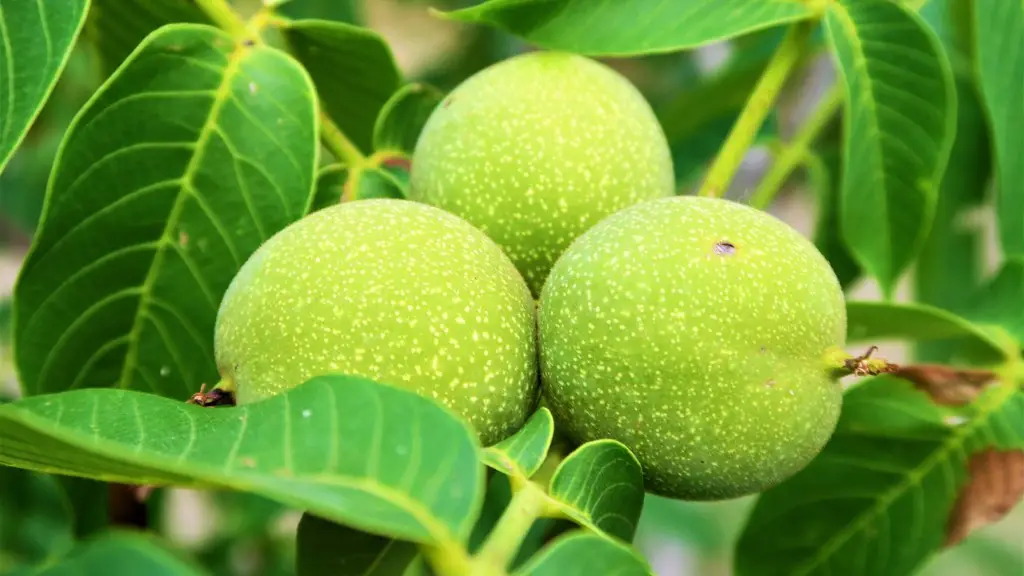Avocado trees are highly sought-after in the garden – and it’s no wonder why. Perfect for adding a splash of green to the yard, they’re also surprisingly easy to grow. Avocados are a tropical fruit, so you might assume that they need hot, humid conditions to thrive – but the truth is more complex than that. To understand what climate an avocado tree needs, we need to take a deeper look at the plant’s requirements.
Avocado trees are native to Central and South America and are found in climates from hot and dry to humid and cool. They’re resilient enough to survive a variety of conditions, like common winter frost. That said, they do best in mild, 55- to 80-degree temps with low humidity. While they naturally grow in warm climates, avocados can also tolerate cooler weather. They’ll even survive temperatures as low as 27 degrees Fahrenheit, provided they’re given extra care.
Avocados love lots of sunlight, especially in cooler climates. It’s best to plant them in a sunny spot – at least eight hours of sun each day – but they’re also quite tolerant of partial shade. The exception is sweet avocados, which need full sun to bear fruit. In hotter regions, it’s a good idea to give the trees late day shade, but in cooler regions it’s important to give them extra sun in the morning.
Avocados also have special water needs. They’re fairly drought tolerant but need regular water to stay in healthy condition. The key here is consistency – while it’s okay to deep-water your tree every few days, it’s better to give it regular, shallow waterings. The soil should feel damp down to a depth of at least 6 to 8 inches.
A good way to test the moisture is to insert a finger into the soil up to the first joint. If it feels dry, it’s time to water. If it feels wet, your avocado tree is getting enough water and you’re good to go. Avocados need mulch, too, to protect their roots from the heat and to aid water retention.
Growing avocados might seem intimidating, but it’s much easier than you think. The most important things to keep in mind are temperature, sunlight, and water, making sure that your avocado tree gets enough of what it needs to thrive. With a bit of love and a favorable climate, you can soon be growing the perfect addition to your garden.
Fertilizing
Once your avocado tree is up and running, it’s important to give it the nutritional support it needs. The best way to do this is with fertilizing – although, it’s important to be consistent, as avocado trees don’t take kindly to large amounts of fertilizer all at once. A good rule of thumb is to give the tree light, regular feedings once every four to six weeks.
When it comes to fertilizer, it’s best to look for products specifically designed for avocado trees. Regular, balanced fertilizer can work just fine, but avocado-specific formulas will provide the specific micro and macro-nutrients the tree needs. Always be sure to read the instructions on the fertilizer package and water plants after fertilizing to help the uptake.
If your tree is newly planted, wait until it’s establish before start fertilizing – usually after the first year. Reddish-purple foliage means the tree isn’t getting enough nitrogen, while yellow leaves show an iron deficiency. Of course, it’s a good idea to keep your soil’s pH in good balance too, avoiding both over-alkalinity and low acidity.
An organic compost or manure can also help your avocado tree, as it will introduce beneficial bacteria and other microorganisms to the soil, which can help to ensure greater fertility and productivity. Introducing compost or manure also helps to ensure the soil is well aerated, which can result in a stronger and healthier tree.
Pruning
Avocado trees need regular pruning to maintain their shape and size. Pruning can also make the tree more productive. Start by removing any dead, diseased, or infested wood, along with any crossing branches. This will also help with airflow, giving the tree extra protection from fungal diseases. Next, prune away any excess vertical growth, as this will encourage the tree to produce more lateral (horizontal) branches.
For the best results, prune the tree either in late winter or early spring, before the growing season starts. It’s important to be brave with pruning, as avocado trees can easily become overgrown and unproductive. As for tools, you’ll need a sharp pair of pruning shears and a saw for larger branches.
Recently planted avocado trees won’t need pruning, but once they’ve put down roots, they’ll need regular trimming. Once established, you should prune the tree annually, making sure to keep it in check and at its optimal size.
Protection from Pests
Most avocado trees aren’t bothered by pests, but it’s a good idea to keep an eye out for insects like aphids, mealybugs, and whiteflies. These pests can cause damage to the tree, so it’s best to nip them in the bud. If you notice any, use an insecticide or horticultural oil to get rid of them.
Animals can also cause damage by eating the fruit or stripping the bark. To keep them away, you may need to put up a fence or use an animal repellent – preferably one that’s safe and non-toxic. It’s also important to keep an eye out for diseases such as root rot. If you notice any symptoms, it’s best to get in touch with an arborist for more advice.
Harvesting Avocados
If you’ve followed all the necessary steps, your avocado tree should soon be ready to harvest. Unlike other fruits, avocados don’t ripen on the tree – instead, they ripen on the ground, usually falling off the tree when ready. In other words, it’s important to be patient – you can’t force an avocado to ripen, no matter how hard you try.
The best way to check if your avocados are ready is to give them a gentle tug. If they come away from the tree easily, it’s time to go picking. If they stay firmly attached, leave them be – they’ll be ripe the next time you check. One handy trick is to place a tarp or sheet under the tree to help you collect the fruits when they fall.
Storage and Preservation
If you’re lucky enough to have a bounty of avocados, you’ll need to find a way to preserve them. Good news: it’s surprisingly easy to store avocados, and you can do it in several ways. Ripe avocados can be kept in the refrigerator for one to two weeks, for example. To freeze them, mash the avocados with a fork and store them in airtight containers in the freezer.
If you store avocados in the pantry, keep in mind that it can take up to two weeks for them to ripen. To speed this up, put them in a brown paper bag with a banana or apple – these fruits give off ethylene gas, which helps avocados to ripen faster.
Avocado trees are easy to grow and provide both enjoyment and sustenance. With the right knowledge and care, you can quickly get started on your tree and be enjoying their tasty fruit in no time.



